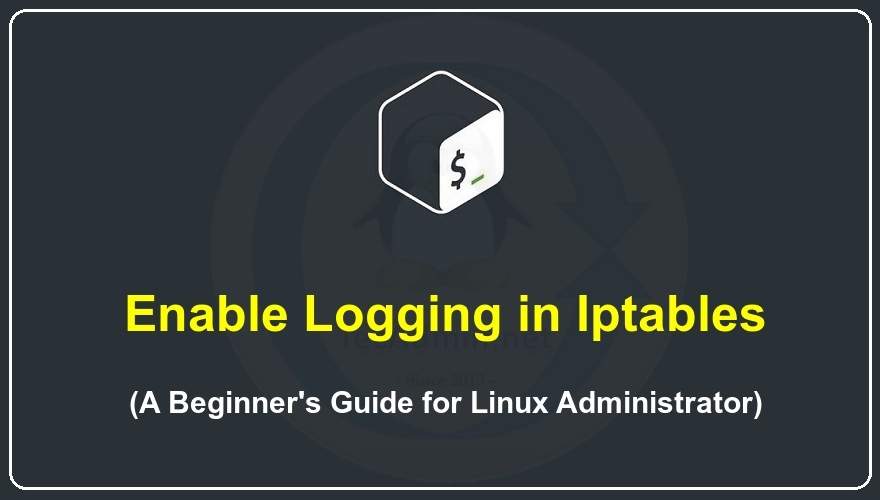Nagios is an open-source monitoring software that allows system administrators to monitor the health and performance of servers, applications, and network devices. Nagios provides a comprehensive solution for monitoring the IT infrastructure and can alert administrators of potential problems before they become critical. In this article, we will go over the steps to install Nagios on CentOS and Red Hat Enterprise Linux (RHEL) 9/8. These steps cover everything from downloading the software to configuring authentication for the Nagios web interface. By the end of this article, you will have a fully functional Nagios server that can be used to monitor…
Author: Rahul
Nagios is an open-source monitoring tool that is used to monitor hosts, services, and network devices. It provides real-time monitoring, alerting, and reporting capabilities to help you proactively identify and resolve issues in your IT environment. In this article, we will show you how to install Nagios Server on Ubuntu & Debian, including the prerequisites, installation process, and configuration steps. Nagios Server is the central component of the Nagios monitoring system. It collects data from remote hosts, services, and network devices, and displays the information in a web interface. Nagios Server can be installed on a variety of operating systems,…
Iptables is a powerful firewall tool that is commonly used on Linux systems to control incoming and outgoing network traffic. One of the most important features of iptables is its ability to log network activity, which can be used to troubleshoot issues and monitor security. However, many beginners may find the process of enabling logging in iptables confusing or overwhelming. Before we begin, it is important to note that iptables logging is only available in kernel 2.4.x and later versions. Also, you need to have root access to your Linux system to perform the steps outlined in this guide. This…
This article will help you to how to manage services using the systemctl command for Systemd services. Systemd is a system and service manager for Linux-based operating systems for managing services. Systemd is more powerful and getting more popularity over older SysVinit. Most of newer release of the Linux-based operating system (eg: CentOS/Redhat 7, Fedora 25, Ubuntu 16.04) using Systemd as a default service management tool. Before using the following example commands change <servicename> with your actual service name like httpd, mysql, apache2 or ssh. Start or Stop Service: Syntax: $ sudo systemctl start <servicename>.service $ sudo systemctl stop <servicename>.service…
Red Hat Enterprise Linux (RHEL) is a widely used and popular distribution of Linux, known for its stability and security. However, the default package repositories provided by Red Hat may not always include the latest software versions or additional software that you may need. This is where additional repositories such as the Remi and EPEL repositories come in. These repositories provide a wide range of additional software packages that can be easily installed on your system. In this article, we will go over a step-by-step guide on how to configure the REMI repositories on an RHEL-based system. Step 1: Install…
For Linux, Adobe Flash Player 32 is available to install. Use this article to install Adobe Flash Player plugin on Ubuntu system. Flash player is useful for playing videos on the web browser. Installing Flash Player The latest flash player is available under default apt repositories. You can simply install it by executing the following commands. sudo apt-get update sudo apt-get install flashplugin-installer The above commands will also download and install browser integration for the flash player.
ifconfig command is useful for getting details of the network configuration in Linux-based systems. Mostly when I install an older version of Linux operating systems, ifconfig command packages were default installed during installation of the operating system but when recently I installed CentOS 7 operating system, ifconfig command was not installed default with operating system installation. Install Package for ifconfig Command ifconfig command comes from net-tools rpm package. Install this package using following command which is available under default repositories. yum install net-tools Getting Interface Information using ifconfig Now use ifconfig command to check network configuration details. Below command will…
Blocking Ping (ICMP) responses in Linux can be an effective way to improve security and reduce unnecessary network traffic. Ping is a commonly used network diagnostic tool that sends a packet to a network device and waits for a response. By default, Linux systems respond to Ping requests, but you can disable this feature using the following steps. Step 1: Check if ICMP is enabled Before you proceed with the steps, you need to check if ICMP is enabled on your system. To do this, open a terminal and type the following command: sysctl net.ipv4.icmp_echo_ignore_all If the output is net.ipv4.icmp_echo_ignore_all…
Apache Hadoop 2.6.5 noticeable improvements over the previous stable 2.X.Y releases. This version has many improvements in HDFS and MapReduce. This how-to guide will help you to install Hadoop 2.6 on CentOS/RHEL 7/6/5, Ubuntu and other Debian-based operating system. This article doesn’t include the overall configuration to setup Hadoop, we have only basic configuration required to start working with Hadoop. Step 1: Installing Java Java is the primary requirement to setup Hadoop on any system, So make sure you have Java installed on your system using the following command. # java -version java version “1.8.0_101” Java(TM) SE Runtime Environment (build…
In the realm of text processing and data manipulation, Unix-like operating systems offer a powerful tool called SED, or the Stream Editor. Primarily used for parsing and transforming text, SED is an essential utility for system administrators, developers, and data analysts. One of its key functions is the ability to delete lines containing a specific string. This article provides a comprehensive guide on how to accomplish this task efficiently. Why Use SED for Deleting Lines? Deleting lines containing specific text is a common task in text processing. SED is particularly well-suited for this job because: Efficiency: SED processes data streamingly,…

